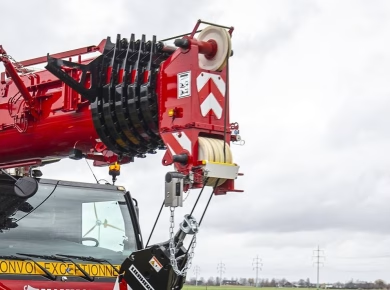When you step onto a construction site, the hum of machinery and the bustle of workers can create an atmosphere thick with anticipation and urgency. Yet, amidst this dynamic environment, the importance of safety meetings often gets overshadowed by the daily grind. I’ve seen it countless times: safety sessions that feel more like a checkbox being ticked off than meaningful discussions. It’s a frustrating reality, especially when the stakes are so high. To truly engage your crew and foster a culture of safety, we need to rethink our approach to these sessions—making them not just informative, but also genuinely engaging and impactful.
Understand Your Audience
Before diving into safety topics, take a moment to assess who you’re speaking to. Each crew member comes with their own experiences, backgrounds, and areas of expertise. Tailoring your message to resonate with your audience can significantly elevate their engagement. For instance, if your team is primarily made up of younger workers, incorporating technology and real-time data into discussions about safety practices can resonate more than a traditional lecture format. It’s about speaking their language and connecting the dots between safety protocols and their daily tasks.
Use Real-Life Scenarios
Nothing drives home the importance of safety more than real-life examples. Drawing from past incidents—whether they occurred on your site or in the broader industry—can be a powerful tool. For instance, discussing a near-miss incident in your crew can open up a dialogue about what went wrong and how similar situations can be avoided. Not only does this make the discussion relatable, but it also empowers your crew to think critically about their actions and decisions.
Interactive Training Techniques
Gone are the days of monotonous PowerPoint presentations. Engaging your crew means embracing interactive training techniques. Consider incorporating hands-on activities or simulations that allow team members to practice safety procedures in a controlled environment. For example, setting up a mock scenario that mimics a potential hazard can encourage team members to collaborate on solutions. This not only reinforces the importance of safety but also builds teamwork and camaraderie.
Leverage Technology
In today’s digital age, technology can be a game-changer in safety training. Utilize mobile apps or software tools designed for safety management to facilitate discussions during meetings. These platforms can provide real-time updates on safety protocols, incident reports, and compliance checklists, making it easier for everyone to stay informed. Additionally, using virtual reality (VR) simulations for safety training can immerse your team in realistic scenarios, allowing them to experience potential hazards without the associated risks.
Encourage Open Dialogue
Creating a safe space for open dialogue is crucial. Encourage your crew to share their thoughts, experiences, and concerns about safety. This not only fosters a culture of transparency but also allows you to identify potential issues before they escalate. Regularly ask for feedback on safety meetings and adjust your approach based on their input. For example, if your team feels certain topics are overemphasized, it might be time to shift gears and focus on areas that require more attention.
Highlight Positive Reinforcement
Recognizing and celebrating safe behavior can significantly influence your crew’s attitude towards safety. Make it a point to acknowledge individuals or teams who consistently adhere to safety protocols. Whether it’s through verbal recognition during a meeting or a small reward system, positive reinforcement can motivate others to follow suit. It shifts the focus from merely avoiding accidents to actively promoting a culture of safety.
Keep It Relevant
One of the quickest ways to lose your crew’s attention is to delve into topics that seem irrelevant to their daily tasks. Always tie safety discussions back to the specific work they’re doing. For example, if your team is engaged in scaffold work, focus on the associated risks and best practices for maintaining safety in that context. By keeping the conversation relevant, you not only enhance engagement but also ensure that the information shared is practical and applicable.
Continuous Learning and Improvement
Safety is not a one-time training event; it’s an ongoing journey. Reinforce the idea that continuous learning and improvement are integral to maintaining a safe work environment. Encourage your crew to stay updated on the latest safety regulations and best practices. Host regular refresher courses or invite guest speakers who specialize in specific safety topics. This commitment to continuous improvement can cultivate a proactive safety culture that extends beyond the meeting room.
Conclusion: Foster a Culture of Safety
Transforming safety meetings from mundane obligations into engaging, thought-provoking sessions isn’t just beneficial—it’s essential. By understanding your audience, incorporating real-life scenarios, leveraging technology, encouraging open dialogue, and maintaining relevance, you can create an environment where safety is prioritized and valued. The ultimate goal is to foster a culture of safety that resonates with every member of your team, encouraging them to not only comply with protocols but to take ownership of their safety and that of their colleagues. Let’s commit to making safety meetings a cornerstone of our work culture, ensuring that everyone goes home safe and sound at the end of each day.


